Shipbuilding has been an integral part of human history, propelling us across vast oceans and connecting distant lands. Over the centuries, the materials used in ship construction have evolved significantly, reflecting advancements in technology and our understanding of naval architecture. Traditional shipbuilding relied heavily on steel, a strong and durable material that could withstand harsh conditions at sea. However, as demands for faster ships with increased fuel efficiency grew, a new contender emerged: composites. These lightweight yet resilient materials are revolutionizing the maritime industry by offering improved performance and reduced maintenance costs. In this article, we will explore the transition from steel to composites as essential shipbuilding materials in the Philippines and delve into their respective advantages and limitations.
Click here to view our shipbuilding capabilities in Tanza, Cavite, Philippines.
The Evolution of Shipbuilding Materials in the Philippines
The evolution of shipbuilding materials in the Philippines is a testament to the country’s rich maritime history and its continuous pursuit of innovation. Traditional ships were constructed using natural materials such as bamboo, wood, and coconut fiber. However, advancements in technology and increased trade demands have led to the introduction of modern shipbuilding materials like steel and fiberglass.
Steel has gained prominence due to its strength, durability, and resistance to corrosion. This shift towards steel hulls allows for larger vessels with increased capacity, making them more efficient for transporting goods across long distances. Furthermore, fiberglass has become a popular choice for small boats because of its lightweight properties and ease of maintenance.
With the advent of composite materials like carbon fiber reinforced polymer (CFRP), shipbuilders are now exploring new possibilities in terms of strength-to-weight ratios and design flexibility. These advanced materials offer significant weight reductions without compromising structural integrity, contributing to improved fuel efficiency and lower emissions. The integration of innovations in shipbuilding materials not only enhances the performance and lifespan of vessels but also reinforces the Philippines’ position as a major player in global maritime industries.

The Importance of Shipbuilding Materials in the Philippines
The importance of shipbuilding materials in the Philippines cannot be overstated. As an archipelago with over 7,000 islands and a highly active maritime industry, the country relies heavily on shipbuilding for both domestic transportation and international trade. Efficient and durable materials are crucial to ensure the safety and reliability of vessels navigating through its vast waters.
One of the key materials used in shipbuilding is steel, known for its strength and versatility. In recent years, however, there has been a growing interest in exploring alternative materials like composites that offer lighter weight without sacrificing durability. These innovative materials not only reduce fuel consumption but also contribute to reduced emissions, aligning with global efforts to combat climate change.
Furthermore, investing in research and development for shipbuilding materials is not only beneficial for the maritime industry but also opens up new possibilities for economic growth. The Philippines has a rich supply of natural resources, such as timber that can be utilized as sustainable alternatives to conventional building materials. By harnessing these resources effectively, the country can diversify its economy while promoting environmentally friendly practices within the industry.
In conclusion, understanding the importance of shipbuilding materials in the Philippines goes beyond just supporting domestic transportation needs or international trade. It plays a vital role in ensuring safety at sea while contributing to sustainability goals by adopting innovative solutions such as lightweight composites and exploring alternative resources like timber.
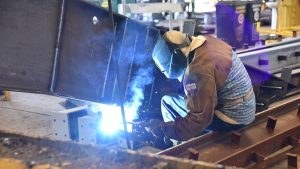
What are the Essential Shipbuilding Materials for Constructing Vessels?
When it comes to shipbuilding, choosing the right materials is crucial to ensure the vessel’s durability and efficiency. One of the most important materials for constructing ships is steel. Known for its strength and durability, steel is extensively used in shipbuilding. It provides structural stability and can withstand harsh environmental conditions such as storms and high waves.
Another essential material in shipbuilding is aluminum. Despite being lightweight, aluminum offers excellent corrosion resistance, making it ideal for constructing vessels that operate in saltwater environments. It also provides fuel efficiency due to its lower weight compared to steel.
Wood has been used in shipbuilding for centuries and continues to be a significant material today. Although not as common as steel or aluminum, wood has unique properties that make it suitable for certain types of vessels, such as traditional sailboats or luxury yachts. Wood offers aesthetic appeal and allows for intricate designs while maintaining structural integrity.
By carefully selecting these essential shipbuilding materials – steel, aluminum, and wood – shipbuilders can create sturdy vessels capable of withstanding various challenges at sea while ensuring their longevity and functionality. Each material brings specific advantages that cater to different requirements in terms of structure, weight management, corrosion resistance, or design possibilities—a testament to human ingenuity when harnessing nature’s resources for naval architecture purposes.

Here are the essential shipbuilding materials in the Philippines:
1. Steel: The Backbone of Ship Construction in the Philippines
Steel is widely regarded as the backbone of ship construction in the Philippines due to its exceptional properties and versatility. With its high strength-to-weight ratio, steel provides the necessary structural integrity that can withstand immense pressure and harsh marine environments. Moreover, its durability ensures long-lasting ships capable of enduring years of operation. The use of steel has revolutionized shipbuilding in the Philippines, allowing for larger, more efficient vessels that can carry heavier loads and navigate rough waters with ease.
One key advantage of using steel in ship construction lies in its adaptability. Shipbuilders can easily shape and form steel into complex structures that meet specific design requirements. This allows for a greater degree of customization, enabling shipyards to build vessels tailored to their client’s needs. Additionally, advancements in steel manufacturing have led to the development of new alloys with enhanced characteristics, such as increased corrosion resistance and improved weldability, further enhancing the structural integrity and longevity of ships.
Furthermore, steel allows for easier maintenance and repair compared to other materials commonly used in shipbuilding. Steel’s widespread availability ensures easy access to spare parts when repairs are needed, minimizing downtime for ships at sea. Additionally, advances in welding technology have made it possible to perform on-the-spot repairs without having to bring the vessel back to the dry dock.
There is no doubt about the importance of steel as the backbone material for ship construction in the Philippines.

Advantages of Steel Shipbuilding Materials in the Philippines
Steel shipbuilding materials offer numerous advantages in the Philippines. Firstly, steel is renowned for its exceptional strength and durability, making it ideal for constructing vessels that can withstand the harsh marine environment. The increased tensile strength of steel allows ships to be built with thinner yet stronger hulls, resulting in higher payloads and improved fuel efficiency. Additionally, steel is highly resistant to corrosion, which is critical in tropical countries like the Philippines, where ships are exposed to saltwater and humidity. This resistance reduces maintenance costs and increases the lifespan of the vessels.
Another advantage of using steel shipbuilding materials in the Philippines is their versatility. Steel can be easily molded into various shapes and sizes, enabling designers to create customized ship structures that meet specific requirements. Moreover, steel’s flexibility allows for easy modifications or expansions if necessary. This adaptability plays a crucial role as shipping needs evolve over time due to technological advancements or changes in cargo demands.
Lastly, the availability of high-quality domestic steel production ensures cost-effectiveness for shipbuilding projects in the Philippines. With local sourcing options readily available, manufacturers can avoid expensive importation costs associated with other construction materials. As a result, companies are encouraged to invest more in shipyards and other infrastructure developments related to maritime industries within the country.
Utilizing steel as a shipbuilding material offers significant advantages for maritime businesses operating in the Philippines. By leveraging its strength and durability along with its resistance to corrosion and versatility, steel enhances vessel performance while reducing maintenance expenses over time.

Challenges and Limitations of Steel in Shipbuilding in the Philippines
The shipbuilding industry in the Philippines has been experiencing significant growth in recent years, thanks to the country’s skilled workforce and competitive labor costs. However, one challenge that shipbuilders face is the limited availability of high-quality steel materials locally. Most shipbuilders in the Philippines have to rely on imported steel from countries like Japan and South Korea, which adds to the overall cost of construction.
Another limitation of using steel as a shipbuilding material is its susceptibility to corrosion. The tropical climate and exposure to seawater accelerate this process, leading to higher maintenance costs for ships made with steel. Additionally, steel structures can be heavy, which reduces fuel efficiency and increases operational costs for Filipino vessel owners. This limitation has prompted some companies in the country to explore alternative materials, such as aluminum alloys or composites that offer better resistance against corrosion while being lighter.
Overcoming these challenges and limitations would require focused efforts from both government and industry stakeholders. Investing in research and development for local production of high-quality steel could help reduce dependence on imports while improving affordability for shipbuilders. Similarly, continued exploration of new materials like aluminum alloys or composites could offer viable alternatives that address both corrosion resistance and weight concerns. By addressing these challenges head-on, the Philippines can further establish itself as a hub for world-class shipbuilding while ensuring sustainable practices in an ever-evolving maritime industry.

2. Aluminum: Lightweight and corrosion-resistant option in the Philippines
Aluminum has emerged as a game-changer in shipbuilding materials, especially in the Philippines. With its remarkable lightness and superior corrosion resistance, it presents an ideal alternative to traditional steel and iron options. The use of aluminum brings numerous benefits to shipbuilders, such as increased fuel efficiency due to reduced weight and enhanced durability in harsh marine environments.
The lightweight nature of aluminum allows for greater flexibility in ship design, enabling architects and engineers to construct vessels with higher payload capacities without compromising on structural integrity. Additionally, aluminum’s natural resistance to corrosion eliminates the need for extensive maintenance efforts that come with conventional materials. This advantage not only saves time but also reduces costs over the lifetime of the vessel.
Furthermore, opting for aluminum shipbuilding materials aligns with environmental sustainability goals. Given its superior recyclability properties compared to other metals, aluminum contributes significantly less waste during construction and can be easily repurposed at the end of a vessel’s life cycle.
Choosing aluminum as a primary material for shipbuilding purposes offers tremendous advantages over traditional alternatives like steel or iron. Its lightweight property aids fuel efficiency, while its corrosion-resistant nature minimizes maintenance needs and enhances durability. Moreover, embracing aluminum supports environmentally conscious practices by reducing waste and promoting recyclability—an aspect crucial in today’s increasingly sustainability-focused world.

Advantages of Aluminum Shipbuilding Materials in the Philippines
Aluminum shipbuilding materials present several advantages for the Philippines’ booming shipbuilding industry. Firstly, aluminum is a lightweight material compared to traditional options like steel. This translates into reduced fuel consumption and increased efficiency, ultimately leading to cost savings over the lifespan of a vessel. Furthermore, aluminum’s high strength-to-weight ratio enhances the ship’s overall performance and maneuverability, making it an ideal choice for vessels operating in both calm and rough seas. The use of aluminum also allows for greater flexibility in design, enabling shipbuilders to craft vessels with unique features tailored to specific commercial or military requirements.
Moreover, one significant advantage of using aluminum shipbuilding materials is their resistance to corrosion in marine environments. Unlike steel, which can gradually deteriorate due to exposure to saltwater and air humidity, aluminum exhibits excellent corrosion resistance properties. This characteristic significantly reduces maintenance costs and extends the lifespan of the vessel by preventing structural damage caused by rusting.
Lastly, aluminum is highly recyclable and sustainable compared to traditional materials like steel or fiberglass. Recycling capabilities make it an eco-friendly choice as it helps reduce waste generation and promotes circular economy principles within the industry.
Employing aluminum shipbuilding materials provides numerous advantages such as lightweight construction for enhanced fuel efficiency, improved vessel performance due to a high strength-to-weight ratio, corrosion resistance leading to lower maintenance costs over time, and its recyclability aspect contributing towards a greener future for the Philippines’ shipbuilding industry.

Challenges and Limitations of Aluminum in Shipbuilding
Aluminum has long been recognized as a valuable shipbuilding material due to its lightweight nature and corrosion resistance. However, it is not without its challenges and limitations in this industry. One major limitation of aluminum is its relatively low melting point compared to other materials like steel. This can be a disadvantage when dealing with high-temperature welding processes required for ship construction, as it increases the risk of deformations or even structural failure.
Another challenge faced with aluminum is its lower stiffness compared to steel. Ships need to endure harsh environmental conditions and rough sea waves, which require materials with high tensile strength and stiffness. Although aluminum alloys have improved over time, they still fall short in these areas when compared to steel, which limits their application in certain shipbuilding segments such as larger vessels.
Furthermore, the availability and cost of aluminum can pose significant challenges for shipbuilders. While there are ample resources of this metal worldwide, extracting and refining it can be an energy-intensive process. Moreover, the global demand for aluminum across various industries also impacts its cost in shipbuilding projects, making it less economically viable than alternative materials like steel.
Despite these challenges and limitations, technological advancements are continuously pushing boundaries in utilizing aluminum more effectively within shipbuilding applications. Research on alloy compositions and manufacturing techniques aims to improve the strength-to-weight ratio of aluminum alloys while retaining their corrosion resistance properties. Additionally, innovative solutions like hybrid structures combining different materials could potentially overcome some of the limitations posed by pure aluminum constructions.
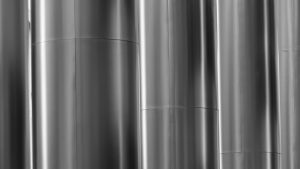
3. Fiberglass: Versatile material for small vessels
When it comes to shipbuilding materials, fiberglass has rapidly gained popularity for small vessels. One of the factors that make fiberglass so versatile is its strength and durability. Unlike traditional materials such as wood or metal, fiberglass offers exceptional resistance to corrosion and rot, making it an ideal choice for boats that will be exposed to water for extended periods of time. Additionally, fiberglass is lightweight yet sturdy, allowing for easy maneuverability without compromising on stability.
Furthermore, fiberglass offers a multitude of design possibilities due to its flexibility. It can be easily molded into various shapes and sizes during the construction process, providing boat builders with endless options when it comes to creating unique vessel designs. This versatility not only enhances the aesthetic appeal of small vessels but also enables them to navigate through different types of water bodies with ease.
Another noteworthy advantage of using fiberglass in shipbuilding is its low maintenance requirements. Unlike wooden boats that demand regular varnishing and painting or metal boats susceptible to rusting over time, fiberglass vessels require minimal upkeep. This not only saves both time and money but also ensures that Filipino ship owners can spend more time enjoying their vessel on the water rather than constantly tending to its maintenance needs.
Fiberglass has become a go-to material for constructing small vessels due to its strength, durability, versatility in design options, and low maintenance requirements. As boat builders continue experimenting with new technologies and manufacturing techniques involving this remarkable material, we can expect even more innovative designs and features in the future.

Advantages of Fiberglass Shipbuilding Materials in the Philippines
One of the major advantages of using fiberglass shipbuilding materials in the Philippines is their lightweight nature. Unlike traditional materials like steel or aluminum, fiberglass is significantly lighter, making it easier to handle and maneuver during construction. This not only improves productivity and efficiency but also reduces fuel consumption during voyages, resulting in significant cost savings for shipbuilders and operators.
Another advantage of fiberglass shipbuilding materials is their superior corrosion resistance. In a country like the Philippines with a warm and humid climate, ships are exposed to harsh environmental conditions that can accelerate corrosion. Fiberglass is highly resistant to corrosion from both saltwater and chemicals, ensuring extended durability and minimal maintenance requirements over time. This translates into longer service life for vessels built with fiberglass materials, reducing operational downtime and repair costs.
Moreover, fiberglass shipbuilding materials offer design flexibility that allows for innovative and creative vessel designs. The moldability of fiberglass enables builders to create sleeker hull shapes and more aerodynamic structures that enhance fuel efficiency while maintaining structural integrity. As technology advances in the maritime industry, incorporating durable yet flexible materials like fiberglass will enable Filipino shipbuilders to meet evolving customer demands while staying competitive in the global market.
Adopting fiberglass as a primary material for shipbuilding in the Philippines brings numerous advantages such as reduced weight for improved handling, enhanced corrosion resistance leading to longer service life expectancies with lower maintenance requirements, along with design flexibility, allowing builders to incorporate innovative features catering towards emerging industry trends.

Challenges and Limitations of Fiberglass in Shipbuilding
The use of fiberglass in shipbuilding has gained popularity over the years due to its numerous advantages, such as its strength, durability, and resistance to corrosion. However, like any other material, fiberglass also has its fair share of challenges and limitations. One of the main challenges is its high cost compared to traditional shipbuilding materials such as steel or aluminum. The production process of fiberglass involves complex procedures and specialized equipment, which adds to the overall cost of the ship. Additionally, the repair and maintenance of fiberglass ships can be more expensive than those made from other materials.
Another limitation of using fiberglass in shipbuilding is its vulnerability to impact damage. While fiberglass is known for being strong and sturdy, it can crack or fracture upon collision with a solid object or even floating debris in the water. This poses a significant risk to ships operating in areas with high traffic or rough seas where collisions are more likely. Furthermore, repairing these damages requires specific expertise and often takes longer than repairing damages on ships built with traditional materials.
Despite its many advantages, it is crucial for shipbuilders and naval architects to consider the challenges and limitations that come with using fiberglass in shipbuilding projects. The higher cost associated with manufacturing, repairs, and maintenance should be carefully evaluated against the expected benefits before choosing this material for a particular vessel.

4. Wood: Traditional charm with modern applications
Wood has been used as a shipbuilding material for centuries, and it continues to hold its charm in the modern era. Despite advancements in technology and the availability of alternative materials, wood remains an indispensable choice for shipbuilders. One reason is its natural buoyancy, which allows vessels to stay afloat even in choppy waters. In addition, wood offers excellent durability and strength properties that are crucial for constructing sturdy ships designed to withstand the harsh elements of the sea.
Moreover, wood provides an aesthetic appeal that synthetic materials cannot replicate. The rich textures and intricate grain patterns evoke a sense of timelessness and elegance, adding a touch of traditional charm to any vessel. Beyond shipbuilding applications, wood finds itself indispensable in various modern sectors as well. From constructing architectural marvels like bridges and buildings to crafting high-quality furniture pieces or renewable energy sources such as biomass pellets – wood’s versatility makes it an attractive choice across industries.
In conclusion, despite living in a tech-savvy world where new materials constantly emerge, wood retains its traditional allure while also finding innovative applications in contemporary settings. Its unique combination of natural buoyancy, durability, strength properties, and unmatched aesthetic appeal make it an enduring choice not only for shipbuilding but also for other industries seeking sustainable solutions rooted in tradition yet propelled by innovation.

Advantages of Wood Shipbuilding Materials in the Philippines
Wood shipbuilding materials have been used for centuries due to their numerous advantages. In the Philippines, where traditional boat-making techniques still thrive, wood remains a popular choice for constructing seafaring vessels. One of the main advantages is its durability. Properly treated and maintained, wood can withstand harsh weather conditions, including exposure to saltwater. Additionally, wood is relatively easy to repair compared to other materials such as steel or fiberglass.
Moreover, wood offers excellent buoyancy properties. The natural fibers in the timber pores allow for better air entrapment, resulting in increased floatation when compared to denser materials like metal. This characteristic is particularly crucial in a country like the Philippines, with its vast archipelago and reliance on sea transportation.
Another advantage of using wood shipbuilding materials is their compatibility with local craftsmanship techniques. Filipino boat builders are skilled artisans who have honed their skills over generations using sustainable practices and locally sourced timber varieties such as mahogany and molave. This not only supports local communities but also ensures that unique designs are created that can be passed down through the ages.
The use of wood shipbuilding materials in the Philippines offers several significant advantages: durability against harsh weather conditions, superior buoyancy properties, and compatibility with valued traditional craftsmanship techniques.

Challenges and Limitations of Wood in Shipbuilding
While wood has been a widely used material in shipbuilding for centuries, it is not without its challenges and limitations. One of the primary issues with wood is its vulnerability to damage caused by water, leading to rotting and decay over time. This necessitates regular maintenance and protection measures, such as applying varnish or paint and ensuring proper sealing. Moreover, wood can be prone to warping and swelling when exposed to moisture for extended periods, which can compromise the structural integrity of the vessel.
Another limitation of using wood in shipbuilding relates to its weight-to-strength ratio compared to modern materials like steel or fiberglass. While advancements have been made in timber engineering techniques, enhancing strength characteristics through lamination or incorporating alternative woods like Douglas Fir or Teak, there is still an inherent limit on how much weight wooden structures can bear before they become excessively heavy. As ships have grown larger and more technologically advanced over time, this factor has prompted a shift towards alternative materials that offer improved strength-to-weight ratios for increased efficiency.
Despite these challenges and limitations associated with using wood in shipbuilding, it continues to hold importance in certain niche areas within the maritime industry. For instance, traditional boat-building techniques maintain the use of timber as it offers unique aesthetic qualities that are prized by many boat enthusiasts and collectors worldwide. Additionally, the natural properties of wood, such as insulation against heat transfer, make it particularly suitable for constructing vessels intended for cold climates where maintaining warmth inside the ship is crucial.
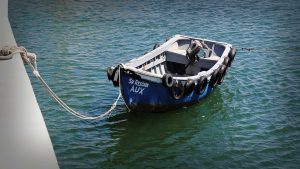
5. Composite materials: Enhancing strength and durability
Composite materials have revolutionized the shipbuilding industry, enhancing both strength and durability. Traditional materials like steel have long been used in ship construction, but they are prone to rust and corrosion over time. With composite materials, however, this issue is effectively addressed. Composites consist of two or more different types of materials that are combined to create a stronger and more resilient material. By using advanced techniques such as fiber reinforcement, composites offer properties that surpass those of conventional shipbuilding materials.
One key advantage of composite materials is their exceptional strength-to-weight ratio. Compared to traditional materials like steel or aluminum, composites can be up to 30% lighter while being equally strong. This weight reduction not only allows for larger cargo capacity but also results in improved fuel efficiency and reduced emissions. Additionally, composites are highly resistant to fatigue damage caused by cyclic loading during extreme sea conditions. They do not rust or corrode like steel does when exposed to saltwater for extended periods, making them an ideal choice for marine applications.
Moreover, composites provide superior durability even when subjected to harsh environmental factors such as UV radiation and chemicals present in seawater. This extends the service life of ships significantly compared to those constructed with traditional materials alone. In fact, numerous naval vessels now incorporate composite components such as hulls or masts due to their enhanced longevity and durability under demanding maritime conditions.
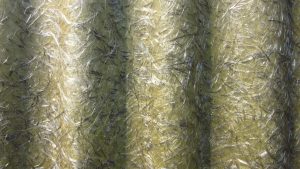
Advantages of Composite Shipbuilding Materials in the Philippines
One of the main advantages of using composite shipbuilding materials in the Philippines is their durability and strength. Unlike traditional materials like steel or wood, composites are highly resistant to corrosion, which is a key advantage considering the country’s tropical climate and exposure to seawater. Additionally, composites have excellent impact resistance and can withstand extreme conditions such as high waves or collisions with floating debris. This not only enhances the lifespan of ships but also ensures safe and reliable operations for both cargo transportation and passenger vessels.
Another advantage of using composite shipbuilding materials is their lightweight nature. Compared to traditional materials, composites offer high strength-to-weight ratio, making ships lighter yet stronger. By reducing the weight of ships, fuel consumption can be minimized, resulting in reduced emissions and operational costs. Furthermore, light ships also enhance speed and maneuverability, allowing for improved efficiency in navigating through narrow waterways or responding to changing weather conditions. Ultimately, this contributes to a more sustainable approach to shipping in the Philippines while offering economic benefits for shipbuilders and operators alike.

Challenges and Limitations of Composite in Shipbuilding
Composite materials, such as fiberglass and carbon fiber, have gained significant attention in shipbuilding due to their many advantages. However, they also come with a unique set of challenges and limitations that need to be considered in the industry.
One major challenge is the cost associated with composite materials. While they offer various benefits like lightweight construction and resistance to corrosion, these advantages often come at a higher price tag compared to traditional shipbuilding materials like steel or aluminum. The high production costs combined with specialized manufacturing techniques increase the overall expenses of using composites in shipbuilding.
Another limitation is the lack of standardized guidelines for designing and classifying composite ships. Unlike conventional materials that have established industry standards, composites are relatively new in ship construction. This makes it difficult for shipbuilders and naval architects to conform to specific rules and regulations when designing composite vessels. Additionally, a limited understanding of long-term performance and durability further restricts the widespread adoption of composites in this sector.
Furthermore, maintenance can pose another challenge when utilizing composite materials in ship construction. Fiberglass-reinforced panels require meticulous care and regular inspections to monitor for potential damage or delamination caused by impacts or exposure to harsh environments. Moreover, repairing composite structures can be complex as obtaining specialized skills and equipment may cause delays during maintenance operations.
While composites hold immense potential for revolutionizing shipbuilding with their numerous advantages, there are several notable challenges that must be addressed before widespread implementation can occur.

Different Types of Composite Materials for Shipbuilding
When it comes to shipbuilding, the choice of materials plays a crucial role in determining not just the performance but also the longevity of a vessel. One type of composite material gaining popularity in recent years is fiber-reinforced polymer (FRP). FRPs are composed of a polymer matrix, such as epoxy or polyester resin, reinforced with high-strength fibers like fiberglass or carbon. This combination results in a material that is not only lightweight but also exhibits excellent corrosion resistance and durability. Owing to these properties, FRPs find applications in various parts of ships, including hulls, decks, and superstructures.
Another type of composite material commonly used in shipbuilding is sandwich panels. These panels consist of a lightweight core material sandwiched between two layers (or skins) of high-strength materials like steel or aluminum. The core can be made from materials such as foam or a honeycomb structure. Sandwich panels offer several advantages over traditional solid metal structures: they provide increased stiffness while keeping weight to a minimum and offer improved thermal insulation properties. Consequently, these panels are particularly suitable for applications where weight reduction is desired without compromising structural integrity.
In recent years, natural fiber composites have emerged as an environmentally friendly alternative for shipbuilding purposes. Made from renewable resources such as jute, flax, or hemp combined with thermoplastic or thermosetting polymers, these composites offer comparable strength-to-weight ratios as their synthetic counterparts while being biodegradable and recyclable.

Future Trends in Shipbuilding Materials
In recent years, the shipbuilding industry in the Philippines has seen significant growth and development. As new technologies emerge and demand for more efficient ships increases, there is a growing need for innovative shipbuilding materials. One of the future trends in shipbuilding materials in the Philippines is the adoption of lightweight composites. These materials offer excellent strength-to-weight ratios and are increasingly being used to construct ships that are not only more fuel-efficient but also environment-friendly.
Another future trend in shipbuilding materials is the use of advanced steels with high corrosion resistance properties. With constant exposure to saltwater, corrosion becomes a major challenge for ships, leading to higher maintenance costs and decreased lifespan. By using advanced steel alloys that possess exceptional resistance against rust and corrosive elements, Philippine shipbuilders can ensure longer-lasting vessels with lower maintenance requirements. Additionally, these advanced steels could enhance safety by reducing the risk of structural failure due to corrosion-induced weakening.
Overall, as technology advances and sustainability becomes a top priority in the shipping industry, it is vital for Philippine shipbuilders to stay up-to-date with future trends in shipbuilding materials. The adoption of lightweight composites and advanced steels will not only improve vessel performance but also have positive environmental impacts.

Future Trends in Shipbuilding Materials in the Philippines
In recent years, the shipbuilding industry in the Philippines has seen significant growth and development. As new technologies emerge and demand for more efficient ships increases, there is a growing need for innovative shipbuilding materials. One of the future trends in shipbuilding materials in the Philippines is the adoption of lightweight composites. These materials offer excellent strength-to-weight ratios and are increasingly being used to construct ships that are not only more fuel-efficient but also environment-friendly.
Another future trend in shipbuilding materials is the use of advanced steels with high corrosion resistance properties. With constant exposure to saltwater, corrosion becomes a major challenge for ships, leading to higher maintenance costs and decreased lifespan. By using advanced steel alloys that possess exceptional resistance against rust and corrosive elements, Philippine shipbuilders can ensure longer-lasting vessels with lower maintenance requirements. Additionally, these advanced steels could enhance safety by reducing the risk of structural failure due to corrosion-induced weakening.
As technology advances and sustainability becomes a top priority in the shipping industry, it is vital for Philippine shipbuilders to stay up-to-date with future trends in shipbuilding materials. The adoption of lightweight composites and advanced steels will not only improve vessel performance but also have positive environmental impacts.
Looking for the Best Shipbuilder Company that Uses Quality Shipbuilding Materials in the Philippines?
When it comes to shipbuilding materials, finding a company that uses only the highest quality materials is crucial. One such company in the Philippines is Amaya Dockyard & Marine Services Inc. (ADMSI). With our commitment to excellence and years of experience in the industry, we have become known for our expertise in utilizing top-notch shipbuilding materials in Tanza, Cavite, Philippines.
- Email us: info@amayadockyard.com
- Call our 24-hour hotline: +63 917 633 0479
- Viber: +63 917 633 0479
- WhatsApp: +63 917 633 0479
- Facebook Messenger: Click here
- Click here to inquire
Amaya Dockyard & Marine Services Inc. takes pride in sourcing our shipbuilding materials from reputable suppliers that prioritize quality and durability. We understand that the success of any shipbuilding project relies heavily on the reliability and longevity of the materials used. By using superior materials, ADMSI ensures that our ships are built to withstand even the harshest maritime conditions, providing peace of mind to both Filipino vessel operators and ship owners.
Our meticulous attention to detail extends to every aspect of shipbuilding, from hull construction to equipment installation. With a team of highly skilled Filipino engineers and technicians overseeing each step of the process, ADMSI guarantees that only top-quality materials are incorporated into every vessel we build. This dedication ensures that our clients receive ships that not only meet international standards but also surpass expectations in terms of performance and longevity.
Choosing a shipbuilder company like Amaya Dockyard & Marine Services Inc. in Manila and Cavite, which prioritizes using quality shipbuilding materials, is essential for anyone looking for durable and reliable vessels. By partnering with a trusted name in the industry, you can be confident that your ships will be built to last, withstanding whatever challenges they may face out at sea.
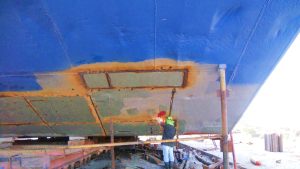
Takeaway: Essential Shipbuilding Materials in the Philippines Used by Shipbuilders
In conclusion, shipbuilding in Cavite, Manila, Cebu, Subic Bay, Zambales, Batangas, Navotas, and Davao relies heavily on a range of essential materials to ensure the construction of high-quality vessels. The use of steel remains at the forefront of shipbuilding materials, as its strength and durability make it an ideal choice for various structural components. However, recent advancements in fiberglass technology have offered shipbuilders new possibilities for constructing lighter and more fuel-efficient ships.
Additionally, wood continues to play a vital role in traditional boat-building techniques within certain regions like Luzon, Visayas, and Mindanao. From hardwoods such as Philippine Mahogany to mangrove timber used for boat decking, these local materials provide a unique touch and allow for the preservation of cultural craftsmanship.
Moreover, aluminum alloys have emerged as an alternative material due to their corrosion resistance and ease of maintenance. Aluminum structures are gaining popularity not only because they weigh significantly less than steel but also because they offer greater flexibility in design options.
With ongoing developments in materials science and engineering methods, it is expected that shipbuilding in the Philippines will continue to evolve, embracing new technologies and eco-friendly solutions that minimize environmental impact while maximizing efficiency and performance. As the demand for ships grows globally, Filipino shipbuilders will need to stay abreast with emerging trends and innovations in order to maintain their position as key players in the industry.
